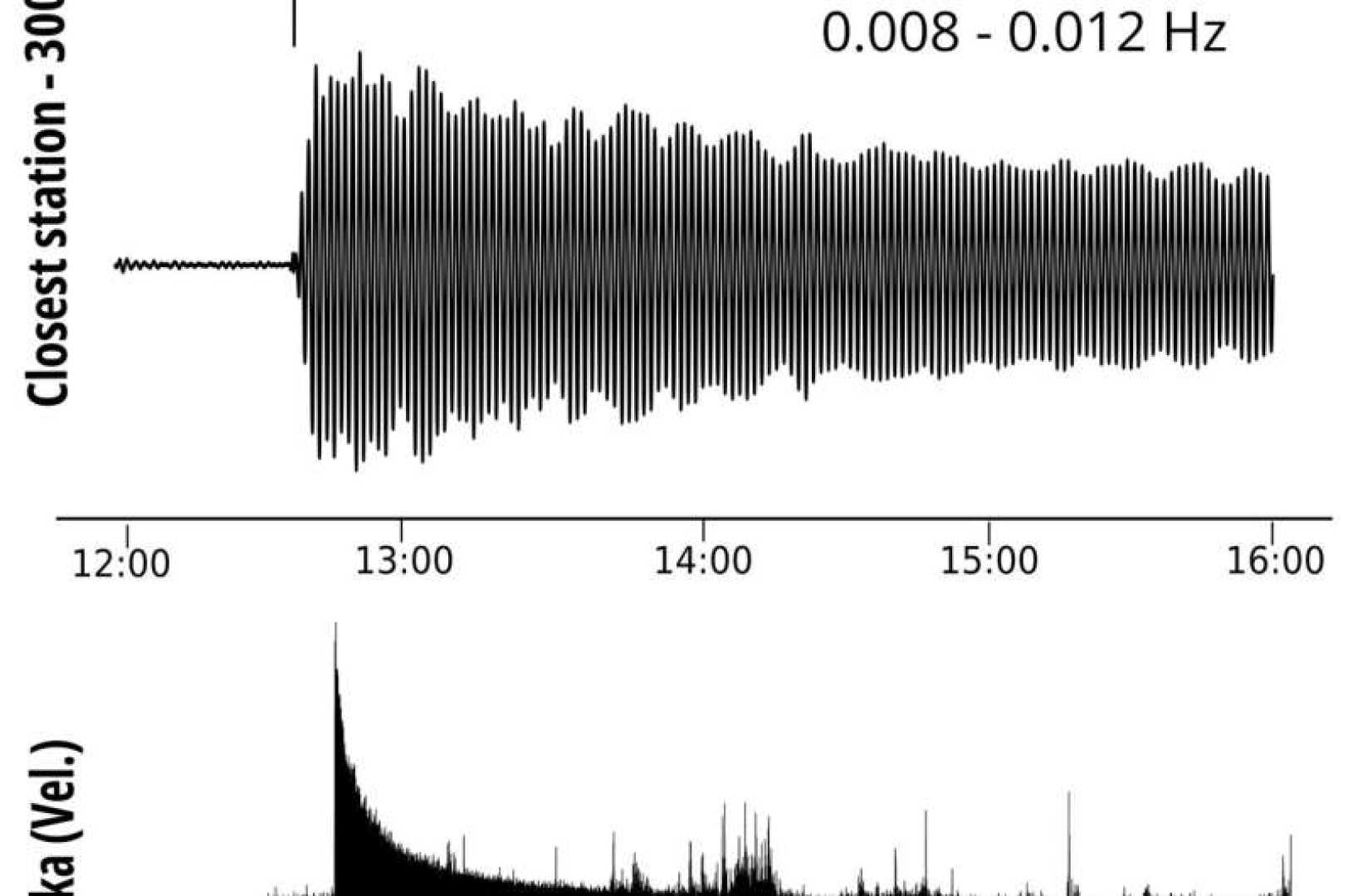World
Climate Change Triggers Unprecedented Tsunami in Greenland Fjord

Last September, an unusual geological event was recorded by seismologists globally as a continuous hum emanated from Greenland over the course of nine days. This vibration, initially baffling to the scientific community, revealed its origins as a massive landslide and subsequent tsunami in a remote Greenland fjord.
Seismologist Carl Ebeling from the Scripps Institution of Oceanography at the University of California, San Diego, noted similarities in the anomalies detected at several distant seismic stations. The phenomena drew attention after reports surfaced from a cruise ship near Greenland’s fjords, detailing the destruction of a key scientific and military outpost on Ella Island.
Upon investigation, a collaborative team of seismologists, oceanographers, and the Danish military uncovered that this destruction was caused by one of the largest tsunamis ever recorded, with waves reaching an astonishing 650 feet. This devastation was triggered by the climate-induced collapse of a glacier, which destabilized a mountainside, leading to a significant rock and ice slide into Greenland’s Dickson Fjord.
The displaced water created a towering wave that reverberated within the 1.5-mile-wide fjord. Scientists observed this wave travel back and forth, a phenomenon known as a seiche, for nine consecutive days, an unprecedented duration.
Kristian Svennevig, a senior research geologist with the Geological Survey of Denmark and Greenland (GEUS) and lead author of the resulting study, highlighted the fortunate absence of tourists during the cataclysm. Svennevig remarked that the cruise ships had just visited the island’s beach days before the incident.
The team’s year-long in-depth investigation revealed the comprehensive dynamics behind this groundbreaking event. Unlike typical landslide tsunamis, which usually dissipate within hours, the Dickson Fjord incident persisted much longer due to its unique geological conditions.
Contributing scientist Alice Gabriel emphasized the importance of understanding Earth’s dynamic systems, noting the increasing frequency of similar climate-induced events. This sentiment was echoed by Bretwood “Hig” Higman, an Alaskan geologist not involved in the study, who suggested that such events are growing more prevalent due to climate change.
This phenomenon reflects broader environmental changes as ice melt continues to expose dark surfaces that absorb more sunlight, contributing further to warming. With permafrost erosion, thinning glaciers, and increased extreme rainfall, landslides are becoming more frequent in regions like Greenland.
The need for ongoing research into these landslides and their potential to cause catastrophic tsunamis is critical, as highlighted by Dr. Stephen Hicks from University College London. He referenced the fragile systems within fjords where such disturbances can occur unbeknownst to the world, demonstrating the far-reaching impacts of climate change.












